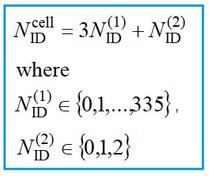5G NR Zadoff-Chu Sequence Overview
Advertisement
This page provides an overview of the 5G NR Zadoff-Chu sequence. It includes a MATLAB simulation of a Zadoff-Chu sequence generator and explains its use in 5G NR technology.
Introduction
In 5G NR wireless systems, three main types of sequences are utilized:
- Zadoff-Chu sequence
- Gold sequence
- m-sequence
Gold sequences are typically used in CP-OFDM, Zadoff-Chu sequences are used in DFT-s-OFDM (specifically for SSS), and m-sequences are used in PSS.
Zadoff-Chu Sequence Use in 5G NR
Zadoff-Chu sequences have key applications in 5G NR, most notably:
- NR Random-Access Preambles (PRACH): They’re used to generate these preambles.
The Zadoff-Chu sequence’s popularity stems from its unique properties:
- Constant Amplitude: Maintains a constant amplitude both before and after Discrete Fourier Transform (DFT).
- Zero Cyclic Auto-Correlation: Exhibits zero cyclic auto-correlation.
- Low Cross-Correlation: Features low cross-correlation with other sequences.
- Low PAPR: For the PUSCH channel with DFT-S-OFDM physical layer, there is low Peak-to-Average Power Ratio.
The following PDF (as mentioned in TS 38.211 section 6.3.3) includes a snapshot of sequence generation for the random access channel.
Advertisement
 RF
RF



